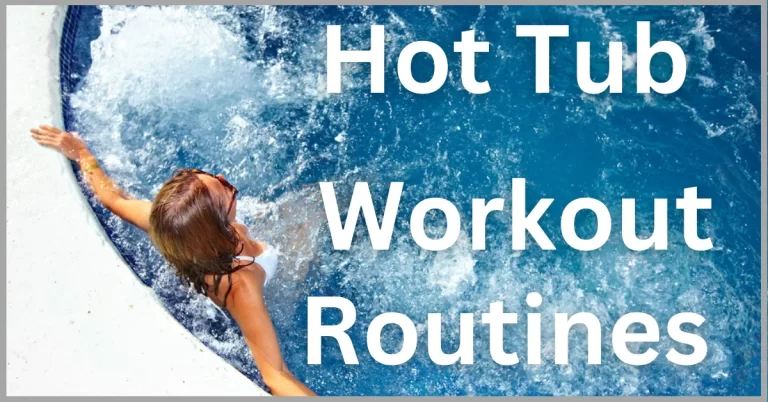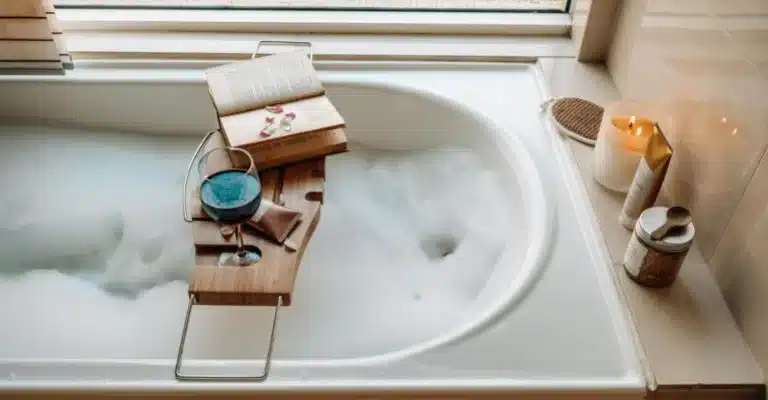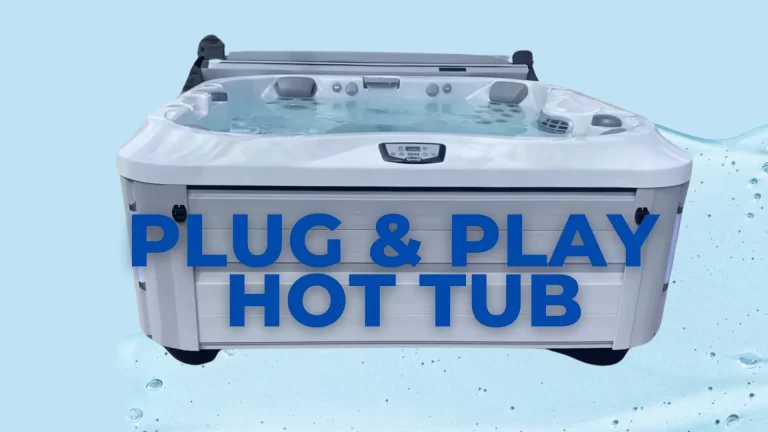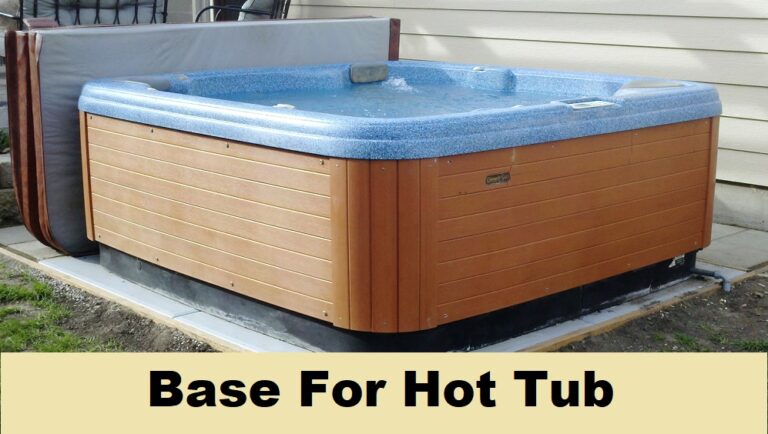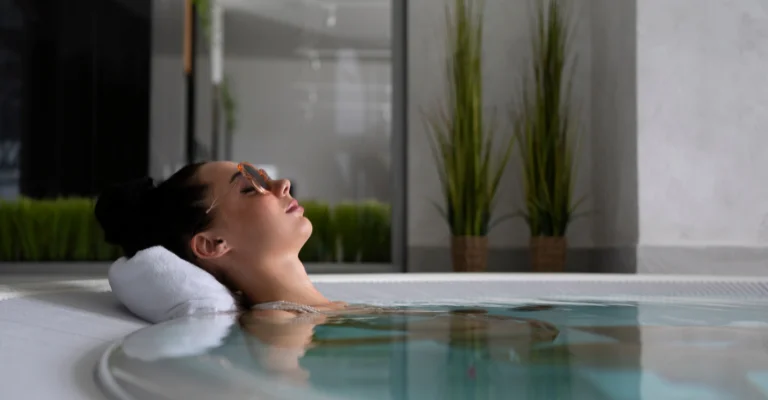Traditional Hot Tubs: Best Options for Relaxation and Wellness
Thinking about getting a traditional hot tub? I’ve been there too—drawn to the rustic charm but unsure if I was ready for the upkeep. Trust me, it’s worth exploring. When I first looked into it, I was worried about how much maintenance would be involved and whether the cost was justified.
But after doing some research and talking to friends who own them, I found out it’s not as intimidating as it seems.
The key is knowing what you’re getting into. Sure, traditional tubs (especially the wood-fired ones) require a bit more hands-on work, but they bring such a cozy vibe that inflatable models just can’t match.
If you’re someone who enjoys a more natural, back-to-basics experience, a traditional tub might be your new favorite way to unwind.
What Are Traditional Hot Tubs?
Known for their durability and luxurious features, these models offer a more permanent, high-performance option compared to inflatable alternatives.
Overview of Traditional Hot Tubs
- Wood-Fired Hot Tubs: These are often crafted from sturdy wood, such as cedar or redwood. A wood stove heats the water, offering a rustic, natural experience. They require regular maintenance to keep the wood in good condition and to manage the fire.
- Cedar Hot Tubs: Cedar hot tubs are highly valued for their durability and natural resistance to decay. The wood’s aroma and aesthetics contribute to a classic hot tub experience. They are usually heated by an electric or wood-fired system.
- Electric Hot Tubs: These are the most common type today, made from materials like acrylic or fiberglass. They use an electric heater to maintain the water temperature and are often equipped with advanced features like jets and lighting.
Differences Between Inflatable and Traditional Hot Tubs
Inflatable hot tubs provide convenience and flexibility, while traditional hot tubs offer more durability, advanced features, and long-term cost savings.
| Feature | Traditional Hot Tubs | Inflatable Hot Tubs |
|---|---|---|
| Setup & Mobility | Complex setup, requires wiring and plumbing. Once installed, they are stationary. | Easy to set up and move, ideal for renters or those needing flexibility. |
| Materials | Made from durable materials like acrylic, fiberglass, or wood. Built to last. | Constructed from vinyl or PVC, less durable and more prone to wear. |
| Features | Offers advanced options like adjustable jets, multiple seating, lighting, and sound systems. | Basic features with limited customization. |
| Energy Efficiency | Designed for energy efficiency with better insulation and heating systems. | Less efficient, leading to higher electricity costs due to poor insulation. |
Most popular types:
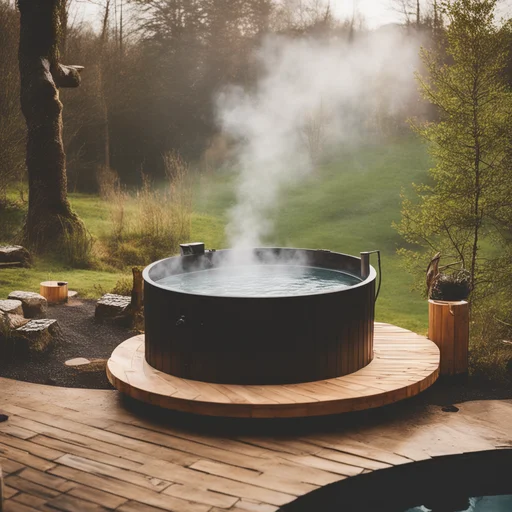
Wood-fired hot tubs: These are the most traditional type of hot tub. They are heated by a wood-burning stove, which gives them a smoky and rustic atmosphere.
Stone hot tubs: These hot tubs are made of stone, which helps to retain heat. They are often more expensive than wood-fired hot tubs but can last longer.
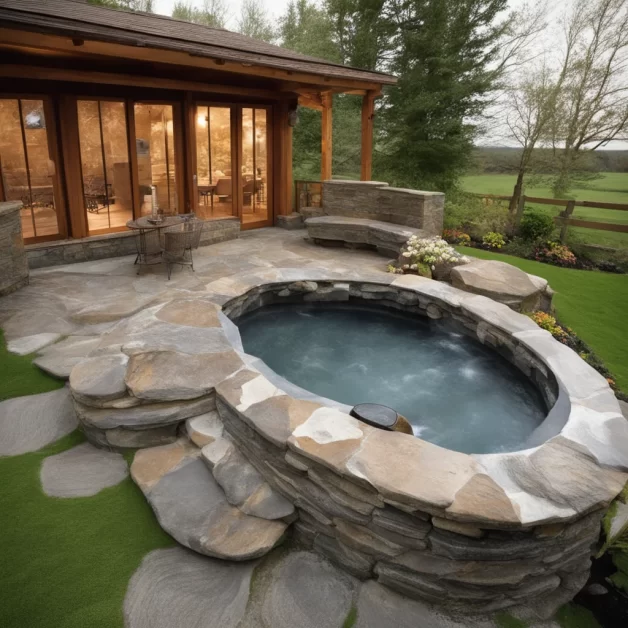
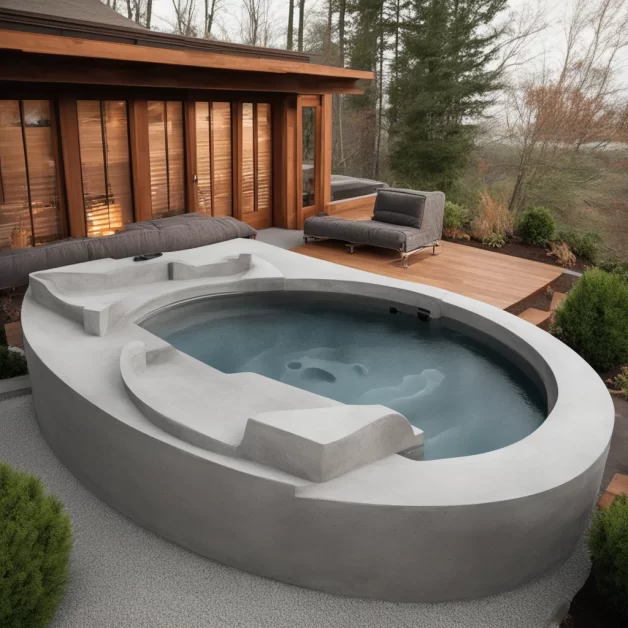
Concrete hot tubs: These hot tubs are made of concrete, which is a durable and long-lasting material. They are also more resistant to staining and fading than wood-fired or stone hot tubs.
Fiberglass hot tubs: These hot tubs are less expensive than wood-fired, stone, or concrete ones. They are also easier to maintain and install. However, they are less durable than other types of hot tubs.

Types of Traditional Hot Tubs
Traditional hot tubs offer a range of experiences, each with its unique features and benefits. Whether you’re drawn to the natural charm of cedar, the eco-friendly approach of wood-burning heaters, or the therapeutic benefits of jets, there’s a traditional hot tub to meet your needs.
Cedar Hot Tubs
Features of Cedar Wood Hot Tubs: Cedar hot tubs are crafted from cedar wood, known for their natural beauty and resilience. These tubs often feature:
- Aesthetic Appeal: The rich, warm tones of cedar provide a rustic and natural look.
- Insulation Properties: Cedar wood has natural insulating qualities, helping to retain heat more efficiently.
Benefits of Using Cedar
- Natural Insulation: Cedar’s insulation helps maintain consistent water temperature, enhancing comfort and energy efficiency.
- Durability: Cedar wood is resistant to rot and pests, making it a long-lasting choice.
- Aesthetic and Rustic Feel: Ideal for users who appreciate a natural, classic look in their outdoor space.
Ideal Users
Cedar hot tubs are perfect for those seeking a traditional, rustic hot tub experience. They are popular among users searching for the best cedar hot tubs or cedar hot tubs near me.
Wood-Burning Hot Tubs
Features of Wood-Fired Heating: Wood-burning hot tubs are heated using a wood-fired stove or heater. Key features include:
- Traditional Heating Method: Uses wood as fuel to heat the water.
- Off-Grid Capability: Ideal for locations without access to electric power.
Maintenance and Heating Times
- Maintenance: Requires regular cleaning of the wood stove and monitoring of water levels and temperature.
- Heating Times: Generally takes longer to heat compared to electric or gas-powered options.
Ideal Users
These hot tubs are best suited for eco-conscious individuals or those with off-grid lifestyles. They are favored by users who appreciate a traditional, eco-friendly heating method.
Traditional Hot Tubs with Jets
Traditional hot tubs with built-in jets combine the classic hot tub design with the added feature of jet-powered hydrotherapy. Key aspects include:
- Built-In Jets: Provide massage and relaxation benefits through jet streams.
- Hydrotherapy Benefits: Helps alleviate muscle tension and stress.
Differences from Modern Jetted Hot Tubs
- Design: Traditional tubs often have a simpler design compared to modern versions.
- Functionality: May not offer the advanced features found in contemporary jetted hot tubs, but still provides effective relaxation.
Benefits of Hydrotherapy
- Relaxation: The jets offer a soothing massage experience.
- Health Benefits: Hydrotherapy can improve circulation and reduce stress.
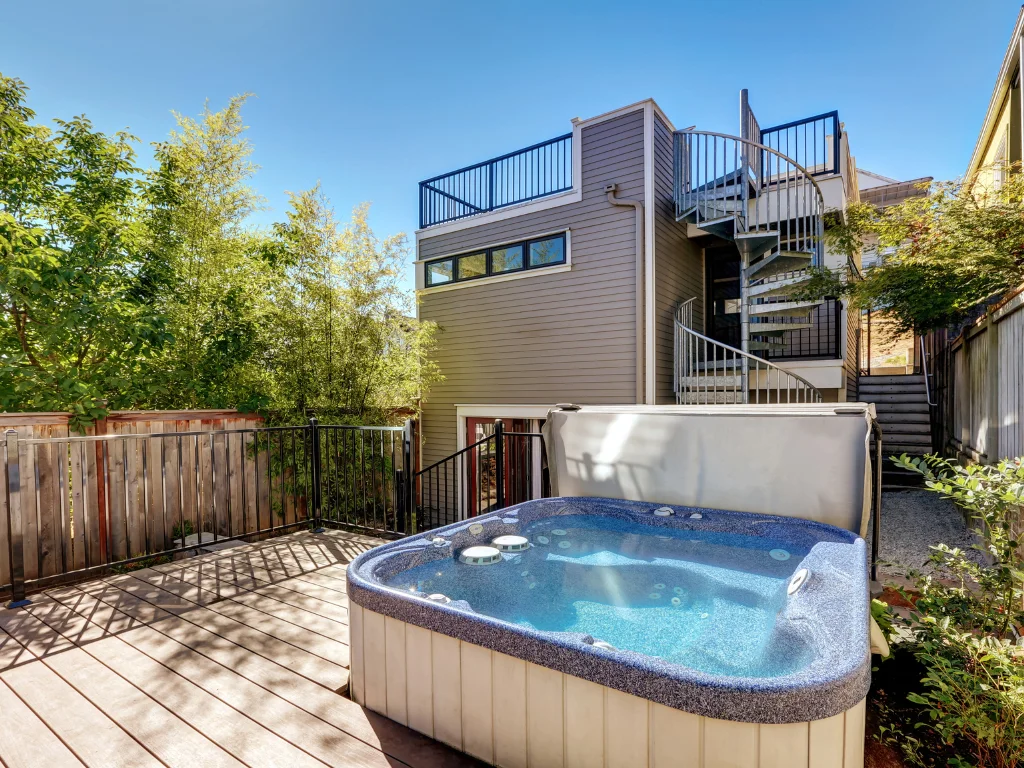
Unveiling the Therapeutic Benefits
👍 Did you know? They offer more than just relaxation. They come with a plethora of therapeutic benefits that can improve your overall well-being.
Soothe Your Muscles and Relieve Stress
The combination of heat, buoyancy, and massage jets works wonders on your tired muscles, melting away tension and stress. You’ll emerge feeling revitalized and ready to take on the world!
Promote Better Sleep and Reduce Insomnia
Struggling with sleepless nights? A dip in a hot tub might be just the ticket to a restful slumber. The soothing warmth and relaxation can help calm your mind and prepare your body for a night of deep, rejuvenating sleep. Say goodbye to counting sheep and hello to sweet dreams.
7 Timeless Relaxation Secrets of Traditional Hot Tub
They have stood the test of time for a reason. Beyond their charming aesthetics and rich history, they hold a collection of relaxation secrets that have captivated people for centuries.
1. Serene Soaking Rituals
Immerse yourself in the warm waters of a traditional hot tub and feel the stress of the day melt away. As you sink into the bubbling embrace, let the soothing sensation envelop your body, easing tension and rejuvenating your spirit. Close your eyes, take a deep breath, and surrender to the tranquil serenity that only a traditional spa can provide.
2. Therapeutic Hydrotherapy
With strategically placed jets, they offer targeted hydrotherapy that can help alleviate muscle aches, reduce joint stiffness, and improve blood circulation. Let the gentle massage of the water jets work its magic as you drift into a state of pure relaxation.
3. Reconnecting with Nature
In a fast-paced world dominated by screens and concrete, They provide an opportunity to reconnect with nature. Whether nestled in your backyard or surrounded by a picturesque landscape, these hot tubs invite you to embrace the outdoors while indulging in soothing warmth. Breathe in the fresh air, listen to the rustling of leaves, and let nature’s serenade enhance your relaxation experience.
4. Digital Detox Oasis
Escape the incessant notifications and distractions of the digital world by stepping into a hot tub. It’s a sanctuary where you can unplug, unwind, and rediscover the lost art of being present at the moment. Leave your phone behind, embrace the peace and quiet, and allow yourself to fully immerse in the simple pleasure of relaxation without the constant buzz of technology.
5. Bonding Moments
These hot tubs have a remarkable way of bringing people together. Whether with friends, family, or loved ones, these cozy spaces foster connection and create unforgettable bonding moments. Engage in heartfelt conversations, share laughter, and create memories that will last a lifetime as you soak in the warm waters and the warmth of each other’s company.
6. Captivating Aromatherapy
Enhance your hot tub experience with the power of aromatherapy. As the warm steam rises and envelops you, add a few drops of your favorite essential oils to create an aromatic journey of relaxation. Choose soothing scents like lavender for tranquility, eucalyptus for rejuvenation, or citrus for a refreshing boost. Let the captivating aromas transport your senses to a state of pure bliss.
7. Timeless Tradition and Legacy
There’s something truly special about embracing a tradition that has transcended generations. When you soak in a hot tub, you become part of a legacy of relaxation and well-being. You join the countless individuals throughout history who have sought solace, healing, and rejuvenation in these timeless treasures.
To learn more about hot tubs and their role in post-vasectomy recovery, visit Hot Tub After Vasectomy.
Traditional vs. Modern Alternatives: Which Is Right for You?
Comparison Table
| Traditional | Modern Alternatives |
|---|---|
| Embrace timeless charm and aesthetics | Showcase sleek and contemporary designs |
| Often made from natural materials like wood | Primarily constructed from durable acrylic or fiberglass |
| Relatively simpler technology with manual controls | Advanced features like touchscreen interfaces and smartphone integration |
| Typically rely on wood-fired, gas, or electric heating systems | Utilize efficient electric heating systems |
| May have fewer jets and massage features | Offer a wide range of customizable jets and massage options |
| Lower initial cost compared to modern alternatives | Higher upfront investment due to advanced features and technology |
| Require regular maintenance and water treatment | Incorporate self-cleaning and water purification systems for easier maintenance |
| Limited insulation may result in higher energy consumption | Improved insulation for energy efficiency and lower operating costs |
| Traditional ambiance and connection to history | Contemporary appeal with cutting-edge features |
| Can be integrated into outdoor landscapes for a rustic feel | Suitable for various indoor and outdoor settings |
Choosing the Perfect Location
When it comes to tradition, location is everything. Whether you prefer the intimacy of an indoor oasis or the openness of an outdoor retreat, finding the perfect spot is essential. Discover the considerations and possibilities that will guide you in creating your personal haven of relaxation.
Essential Maintenance Tips for Long-Lasting Enjoyment
Owning a traditional one requires a bit of tender loving care to ensure its longevity and pristine condition. Fear not! With some straightforward maintenance tips and tricks, you’ll be able to keep your hot tub sparkling clean and ready for countless blissful hours of relaxation.
For additional information visit Hot Tub Patio or if you’re interested in reading reviews and guides for hot tubs, visit Hot Tub Guides and Reviews.
Common Queries:
Are traditional hot tub suitable for all ages? Absolutely! They are suitable for people of all ages. However, it’s essential to supervise young children and ensure they follow safety guidelines.
Can I use aromatherapy oils in my traditional spa? While it’s possible to use aromatherapy oils, it’s crucial to choose oils specifically designed for hot tub use. Consult the manufacturer’s guidelines and use them sparingly to avoid any potential damage to the hot tub’s components.
How often should I drain and refill my traditional hot tub? The frequency of draining and refilling it depends on usage, water quality, and maintenance practices. As a general rule, it’s recommended to drain and refill every three to four months to maintain optimal water cleanliness.
Can they be installed indoors? Yes, it can be installed indoors. However, it’s essential to ensure proper ventilation and moisture control to prevent any potential damage to the surrounding structures.
What is the average lifespan of it? With proper maintenance and care, it can last anywhere from 15 to 20 years or even longer. Regular upkeep, adherence to manufacturer’s guidelines, and timely repairs are key to maximizing its lifespan.









